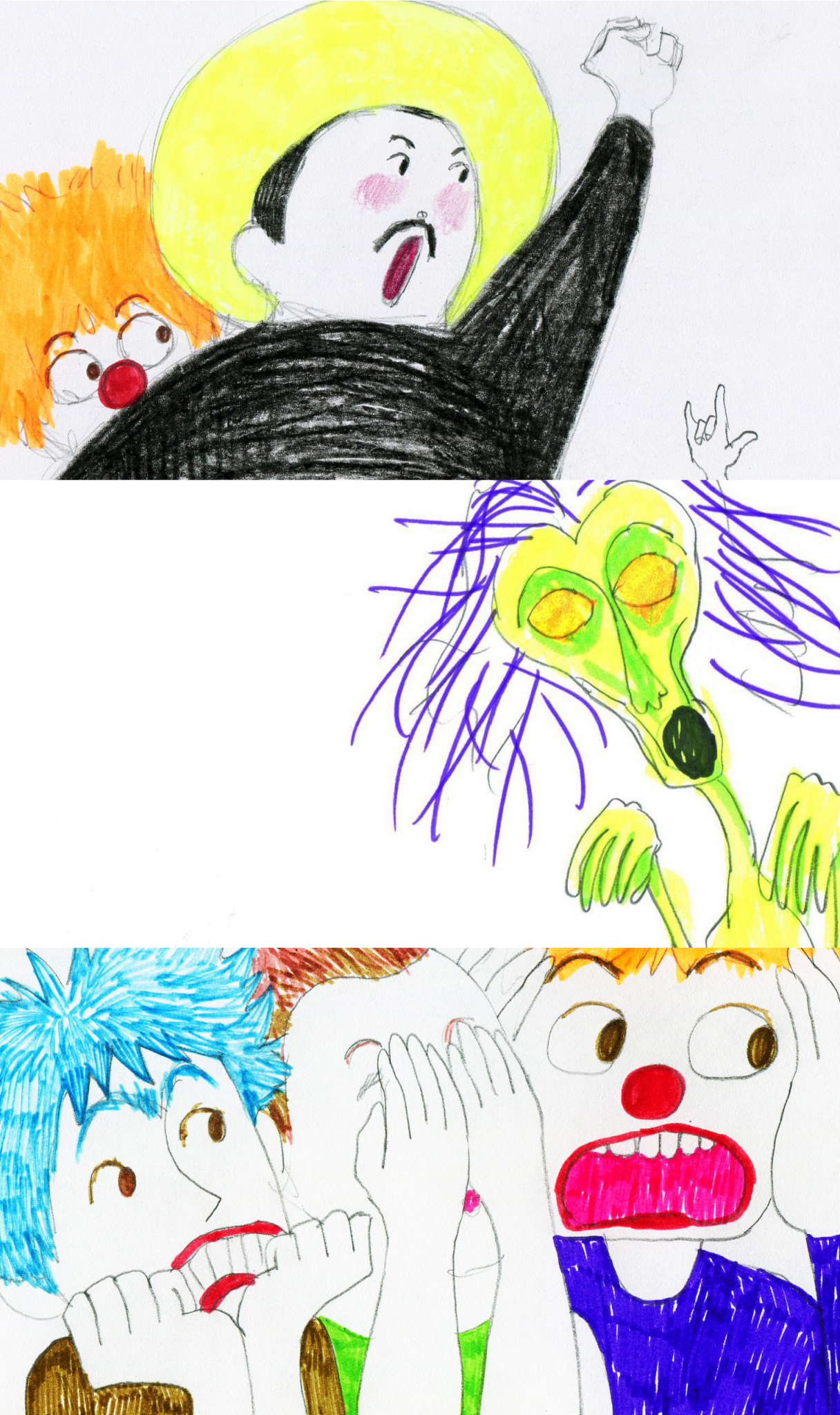We sit in semi-circles of folding chairs around the projector, snacks and lemonade in hand, waiting for the lights to dim. This is the third Butter Elbow Animation Festival in Hyde Park since 2010. “Our mission is the same,” says coordinator Vicky Yen. “To show young animator’s work! Bring good work to public! Celebrate the art of animation!”
Butter Elbow began four years ago as the brainchild of coordinators Laura Shaeffer and Vicky Yen, along with a cohort of their friends. Yen and three other animators, known collectively as the Mobile Animation Station, made a stop-motion film in Hyde Park that they planned to show at the closing event of “Shaeffer and friends’” Op Shop. The team collected films created by students at the School of the Art Institute of Chicago to show alongside it, inviting friends of all ages to join their one-night festival.
The second Butter Elbow took on a new size, showing the films of almost thirty animators from five countries in a three-program bloc. Two years later, this year’s incarnation of Butter Elbow paid homage to its roots by returning to a one-night event with seventeen short films. Animators from the previous years were invited to submit their work, resulting in an eclectic mix of films made by artists from all over the world, SAIC students, and the event coordinators themselves.
The films shown utilized a variety of different animation methods and mediums. Magda Guidi used brightly colored markers and colored pencils in her film “San Laszlo contro Santa Maria Egiziaca” to express the excitement and loudness of the action. In the short, Saint Laszlo does a funny dance to some music before being eaten by a blue-haired, green-skinned demon woman. He is saved when Joey Ramone comes back from the dead and plays music that makes the woman spit him out. A fight ensues between the woman, her demon friends, and the combined team of Joey Ramone, Saint Laszlo, Jesus, and a collective of shocked individuals. Despite the film’s peculiarity, it was one of the most popular among the festival’s younger crowd.
Some of the films had a more obvious storyline to them, including “Il Bruco e la Gallina (Caterpillar and Hen)” by Michela Donini and Katya Rinaldi. “Il Bruco” follows the friendship between a hen and a caterpillar. When the caterpillar goes into a chrysalis, the hen moves her entire house—including her two chicks—to watch the caterpillar and make sure it is okay until it turns into a butterfly. The use of yarn in the stop-motion animation of this film benefits the aesthetic as a whole: the softness of the medium allows for a tangibly warm mood without the presence of dialogue.
Yen thinks that this year’s festival differs from the two past, in that most of the collaborators and supporters who made the newest Butter Elbow possible weren’t in Hyde Park, let alone in the United States. She also explains that this year’s festival shows “some weird, eerie films that will be like the tale of Halloween, talking about death, about love, about life.”
The weird, eerie theme was definitely present in many of the films during the second half of the festival. “Nice Guy” by Nick Tuinstra started off this half with a frightening recount by so-called “nice guys” of experiences they’d had with women. Tuinstra used dark colors and ominous music to set a mood that the redaction of certain lines from his stories completed. “Aurora” by Anne Savitie and “La Testa tra le Nuvole” by Roberto Catani focused on young children, with the first showing the slow death of Aurora’s two parents and her eventual elopement with a bear, and the second describing a situation where a teacher threatens to cut off a young child’s ear.
The last two films focused on the relationships between mothers and their babies in two similar but very distinct ways. “Jessica,” by Amy Lockhart, is shot in very vibrant colors, using paper puppets and stop-motion animation to show a girl named Jessica dance, talk on the phone, and drop and step on her baby and not really care much about it. “Changeling” by Leena Jääskeläinen spliced traditional animation with real footage in order to better express the dissociation expressed in the film between how the woman wants to view her child and how she actually does. The film focuses on the Finnish myth of the changeling and how it intertwines with the reality of post-partum depression.
Both films were terrifying in their own right, with “Jessica” eliciting disbelieving laughs from the audience and “Changeling” bringing pained breathing from everyone sitting around me. Maybe the reality of the last half of the festival made it as weird and eerie as it seemed. The first films were more whimsical, but I walked out of the Experimental Station with the unpleasant feeling that I’d been shown something important.

